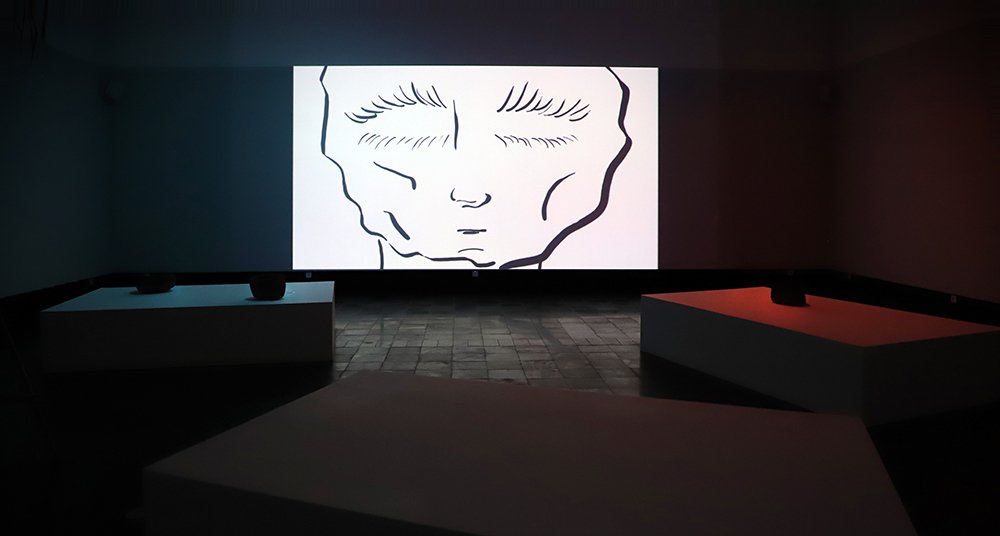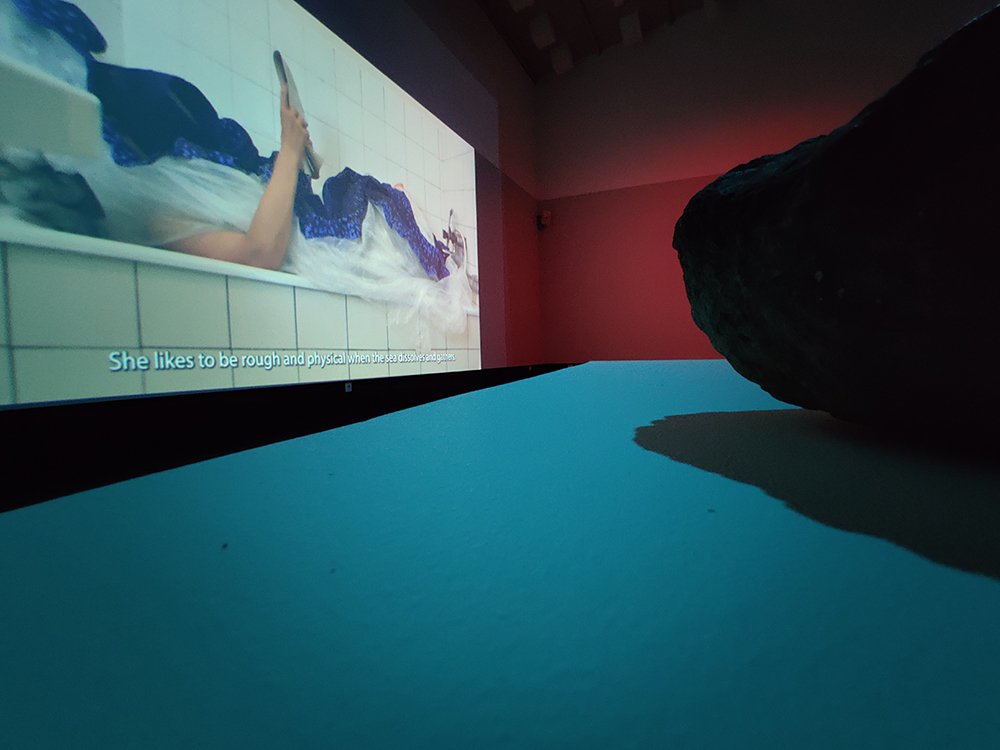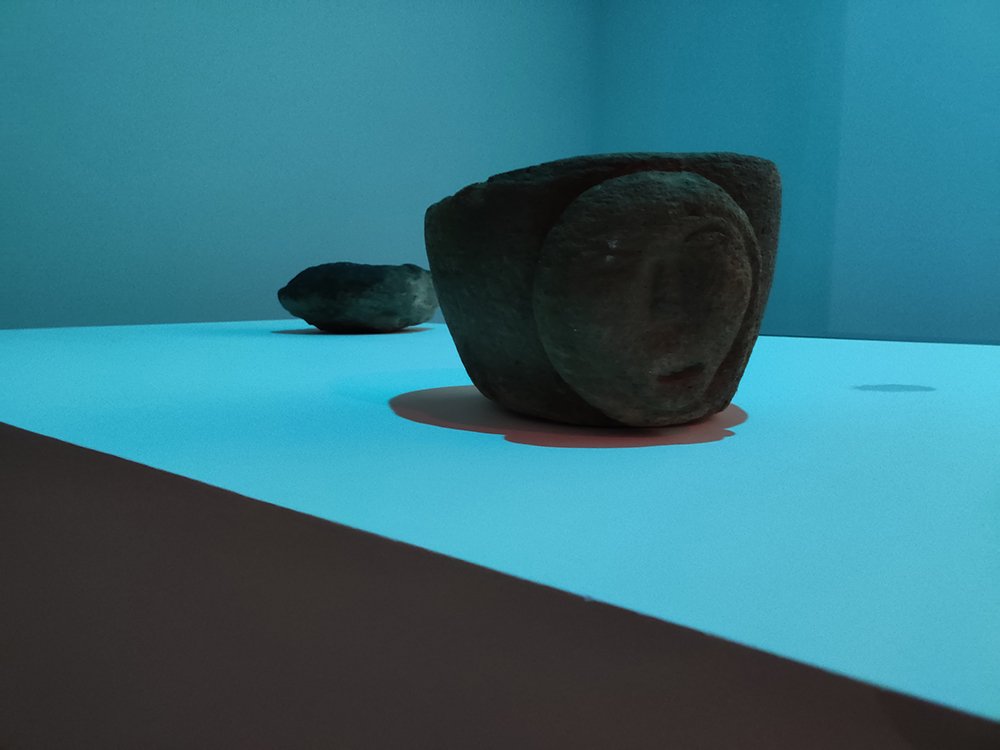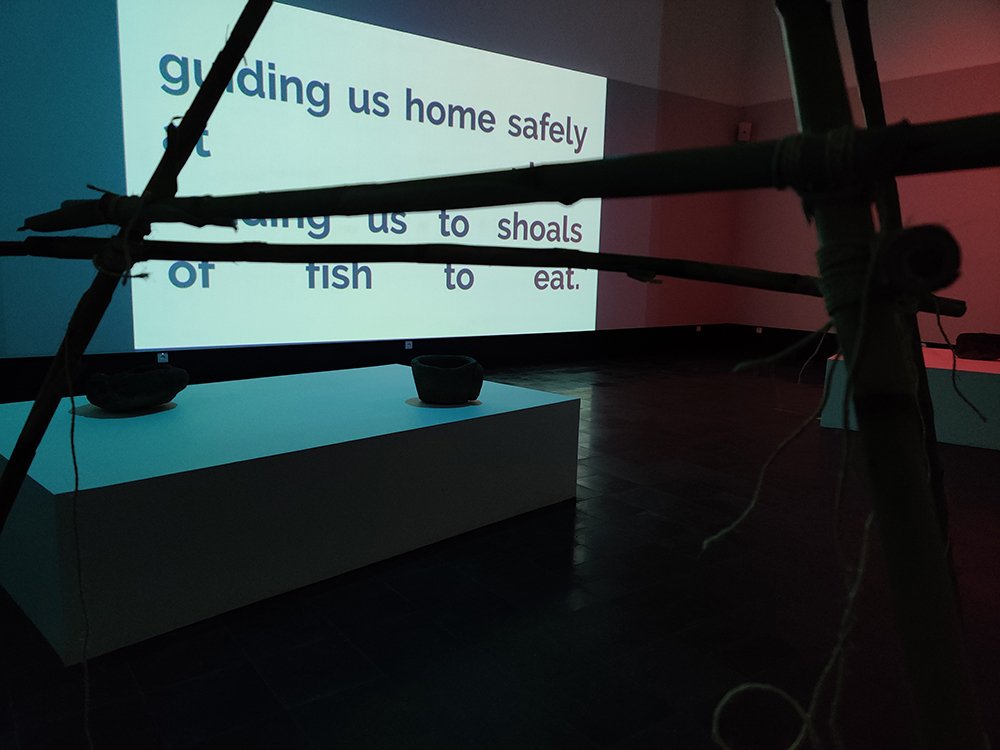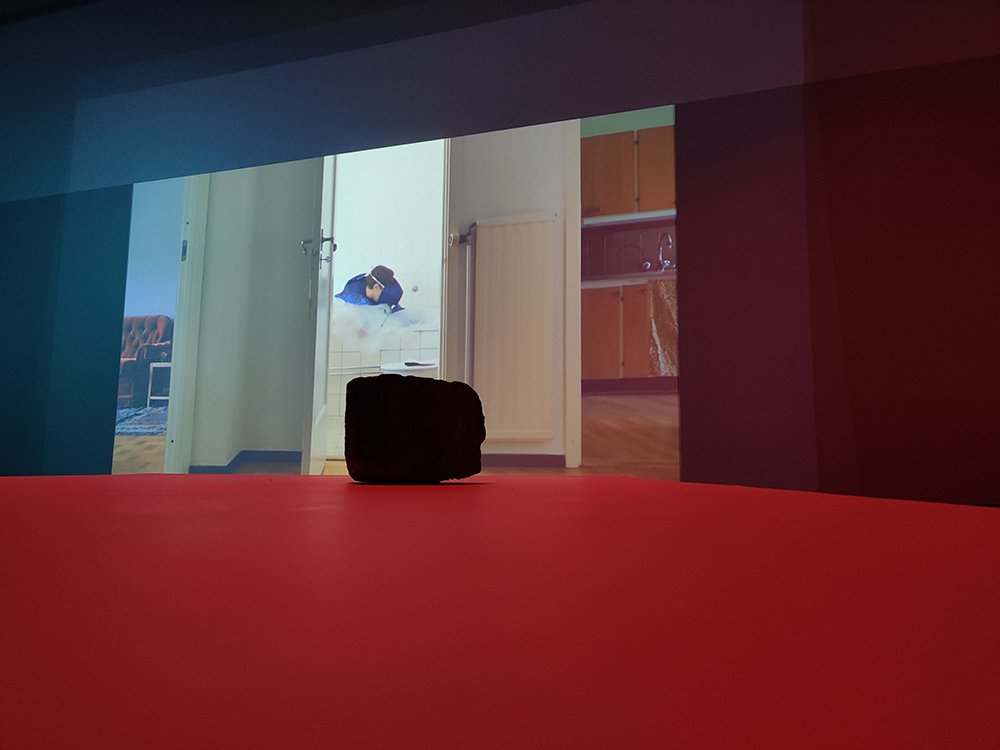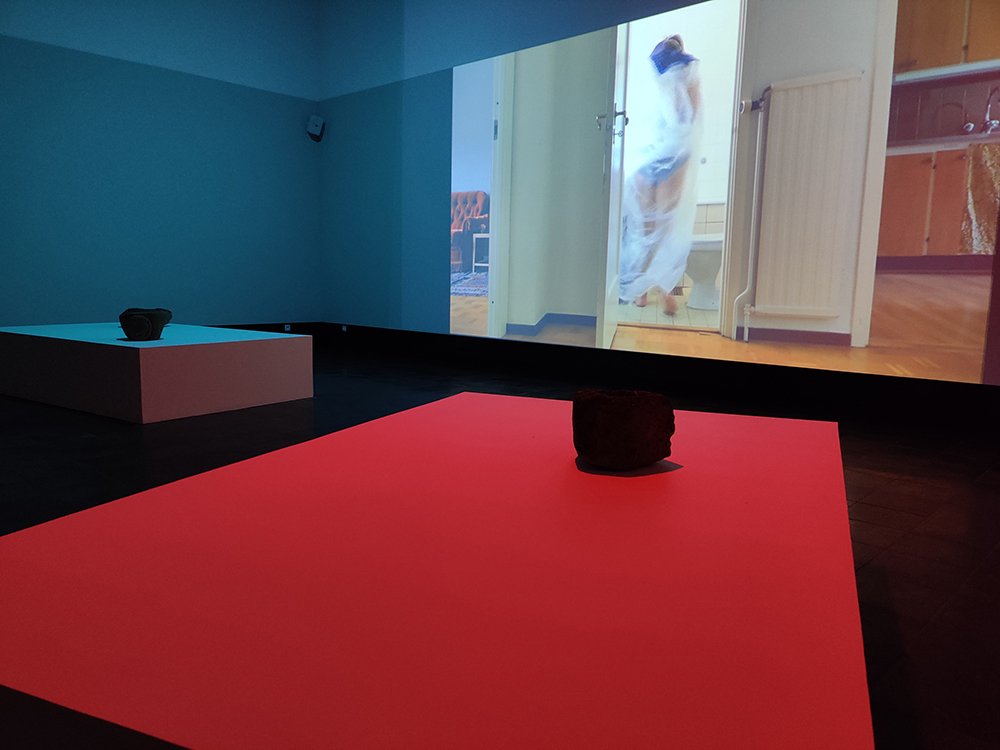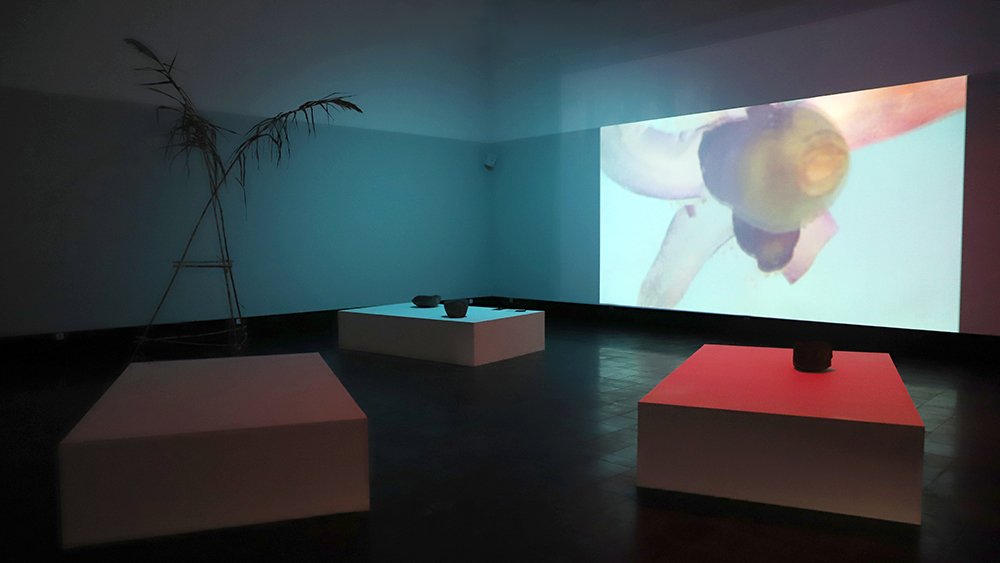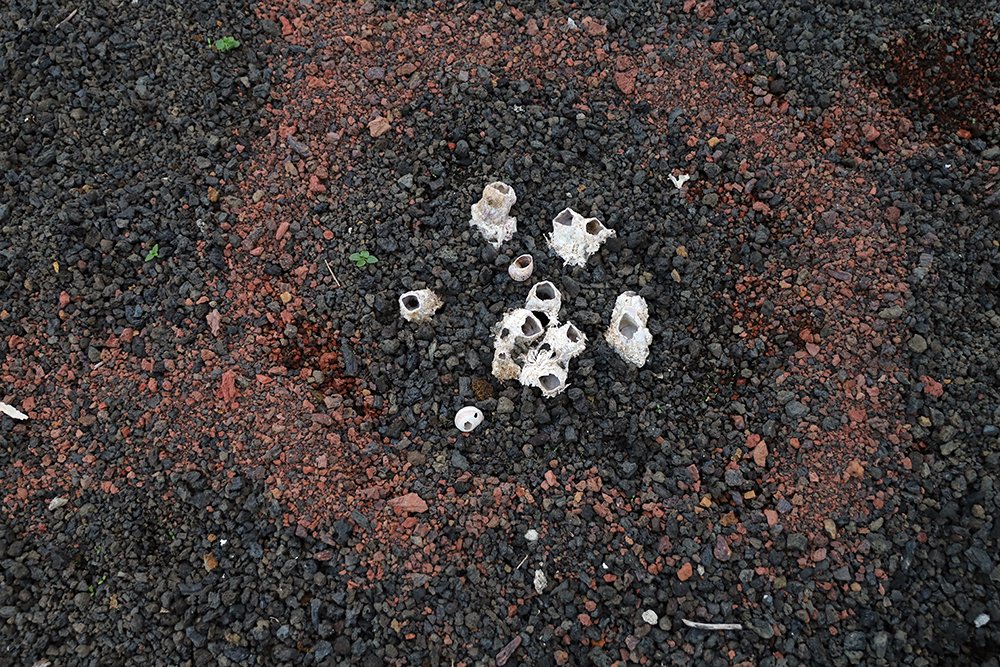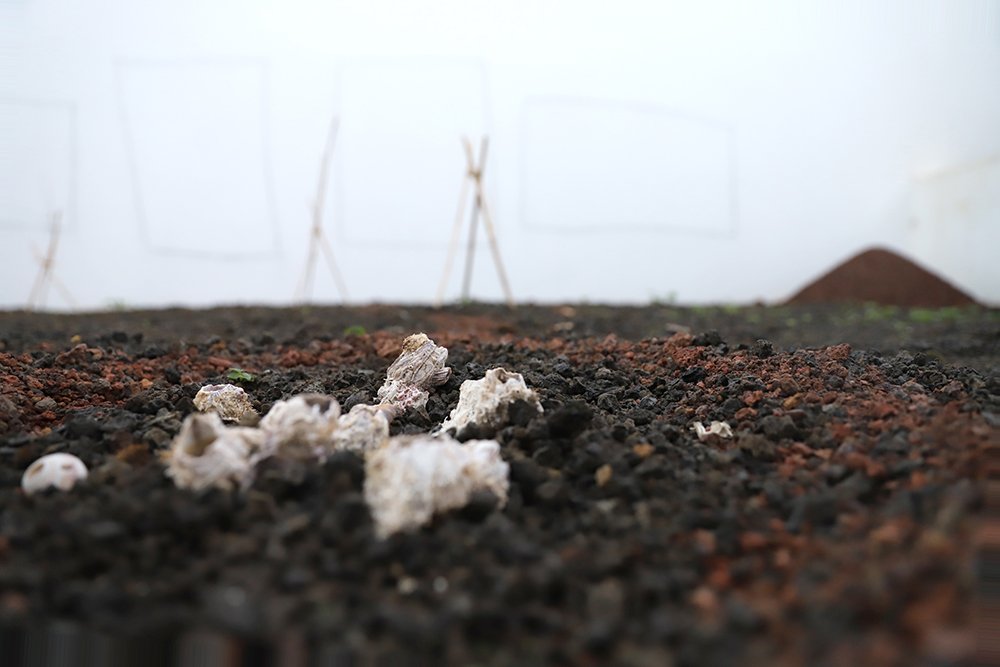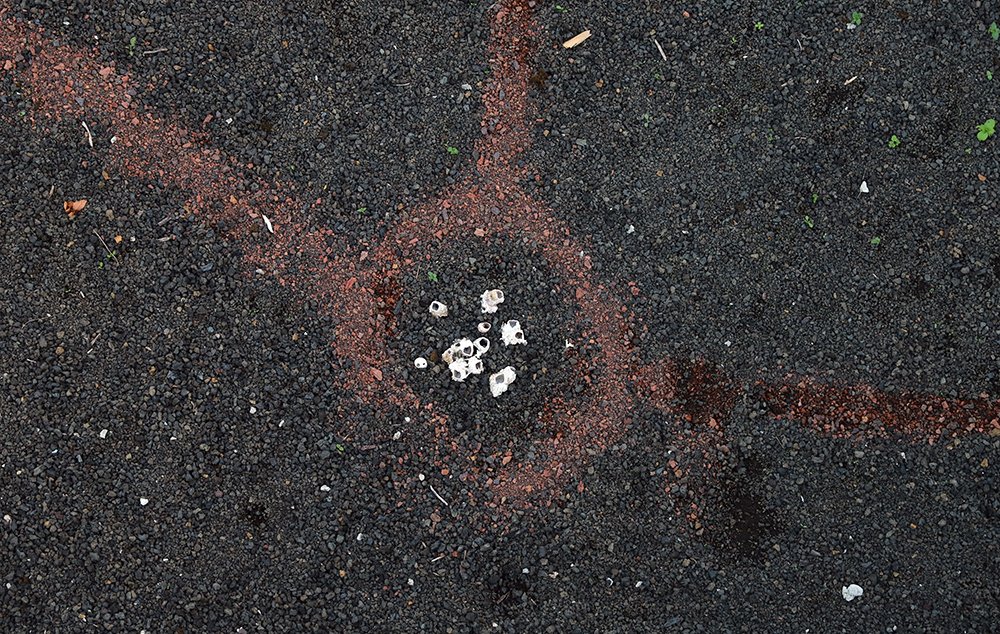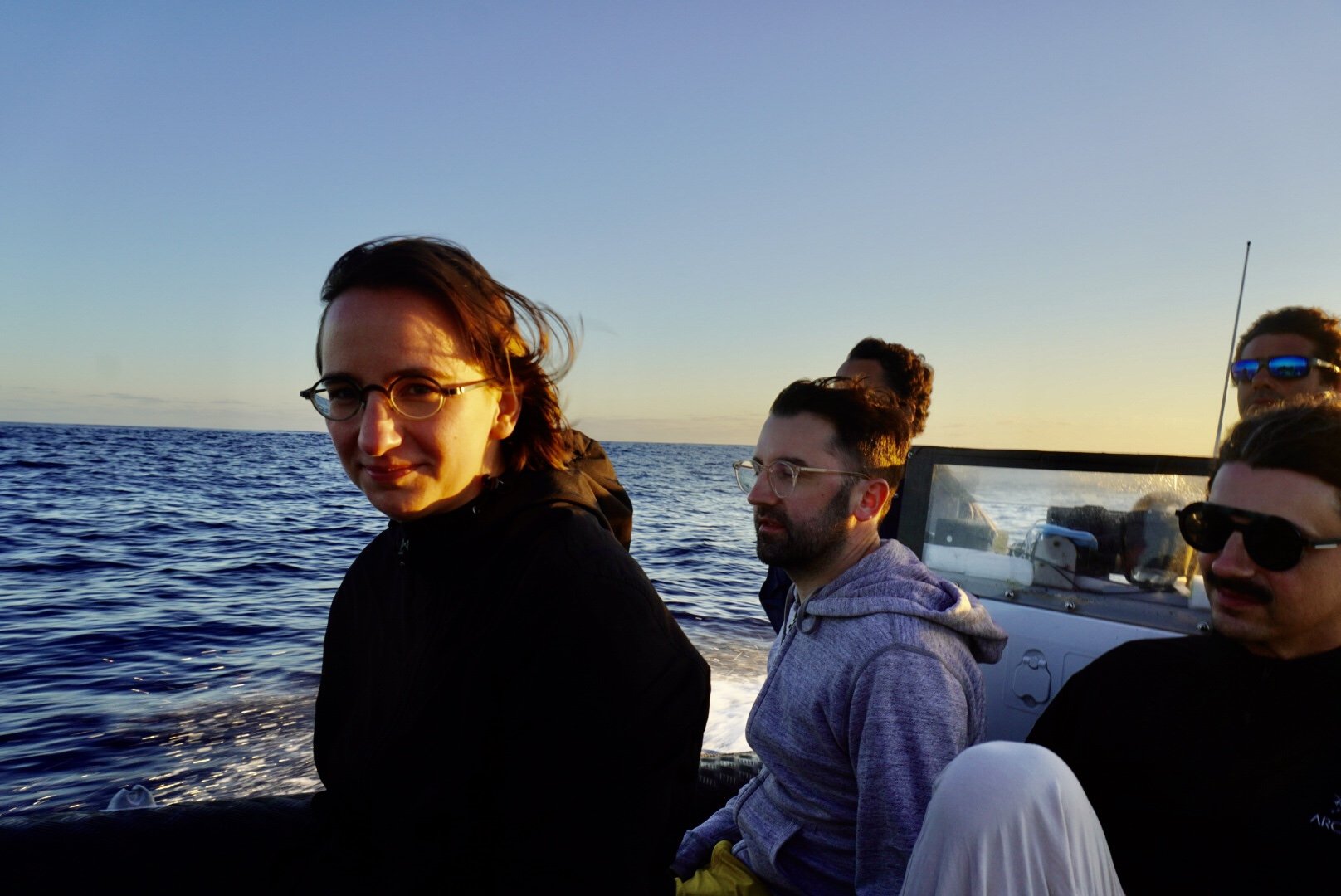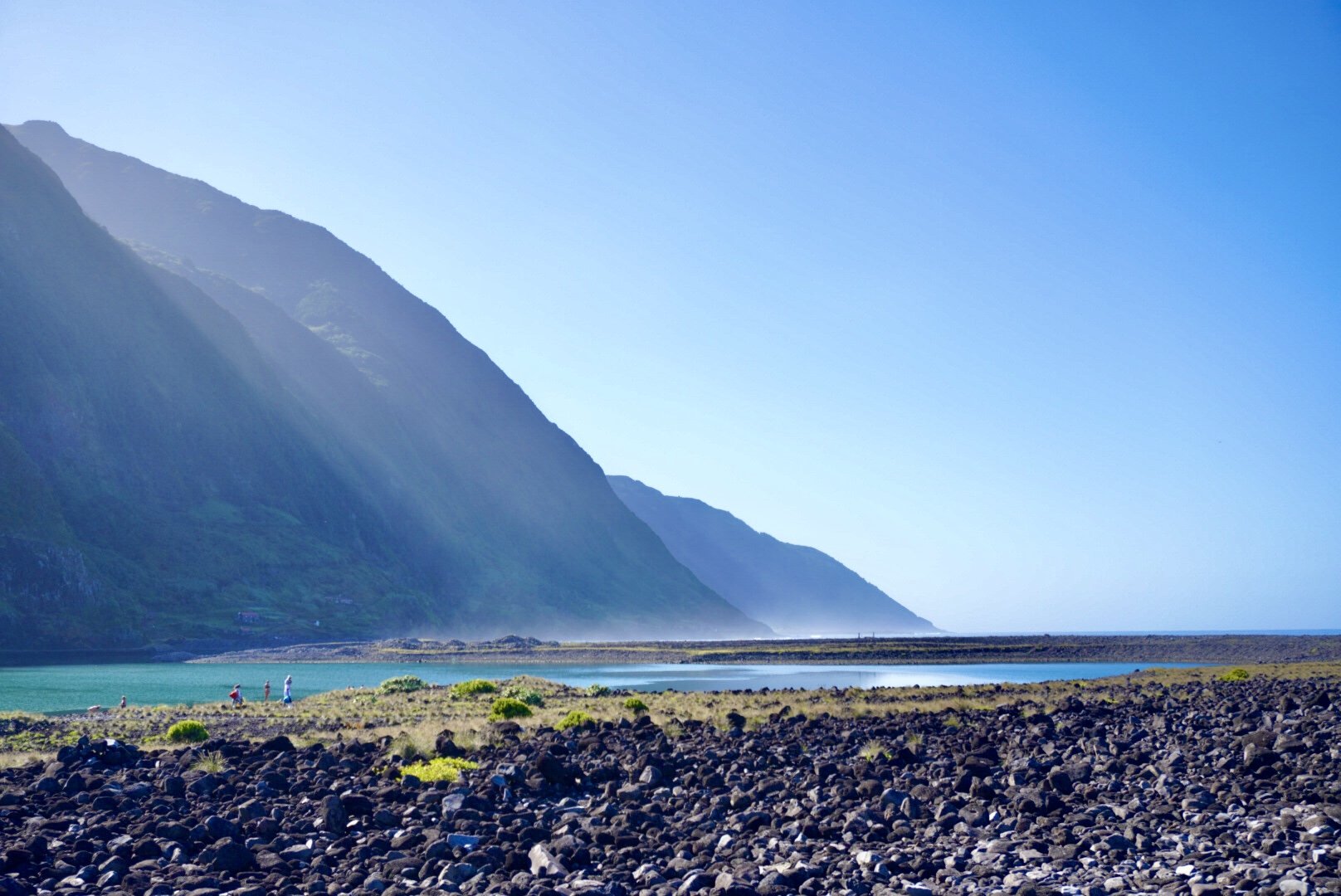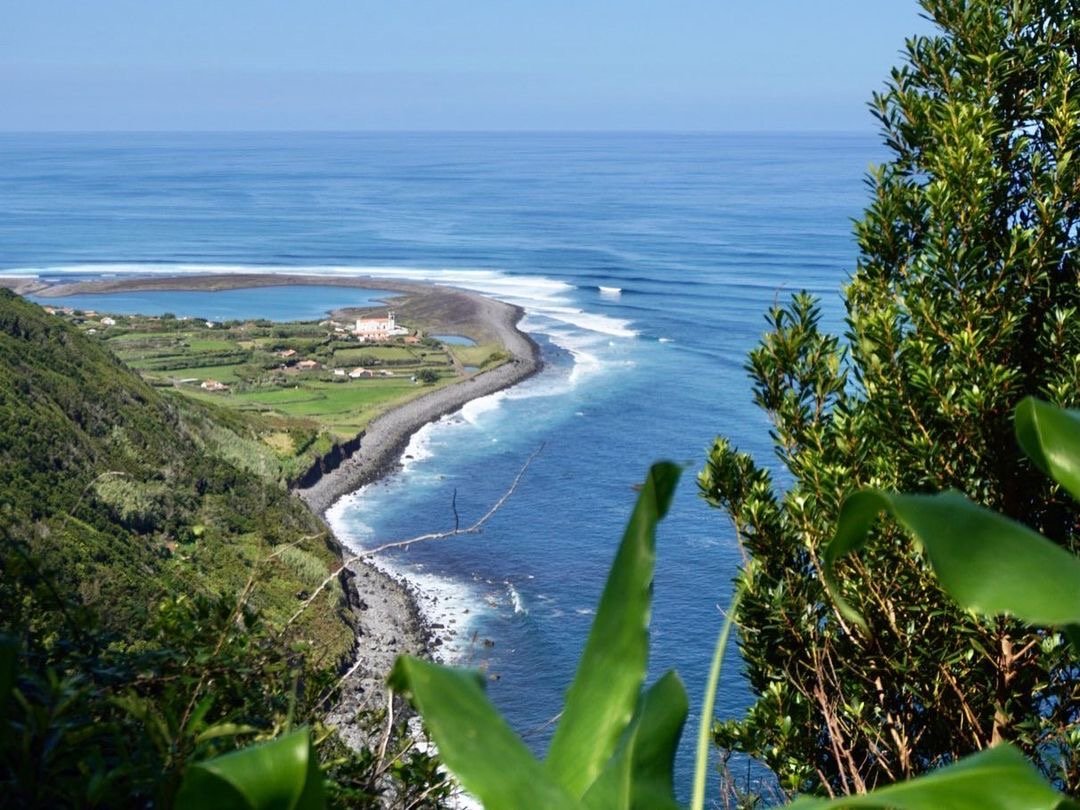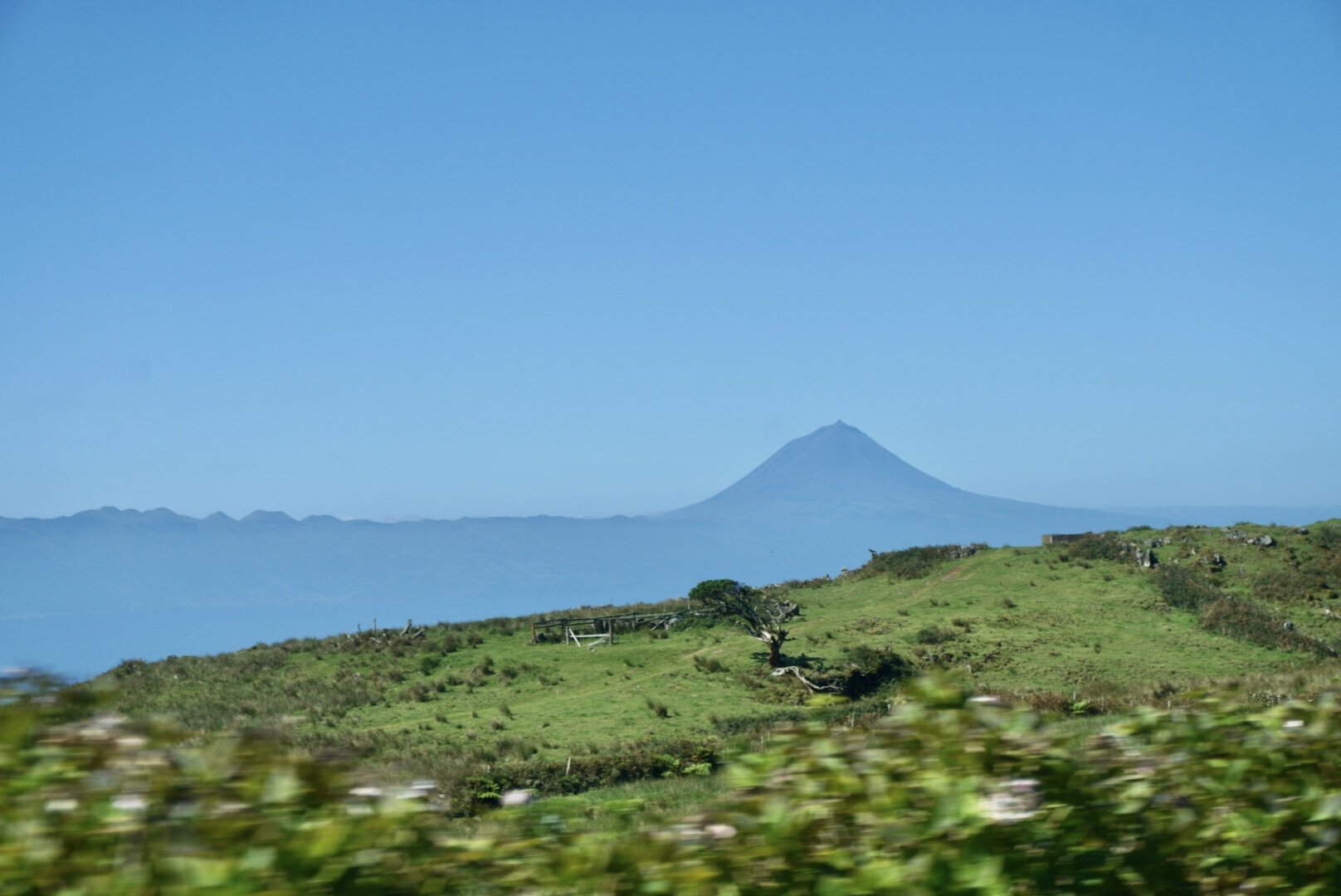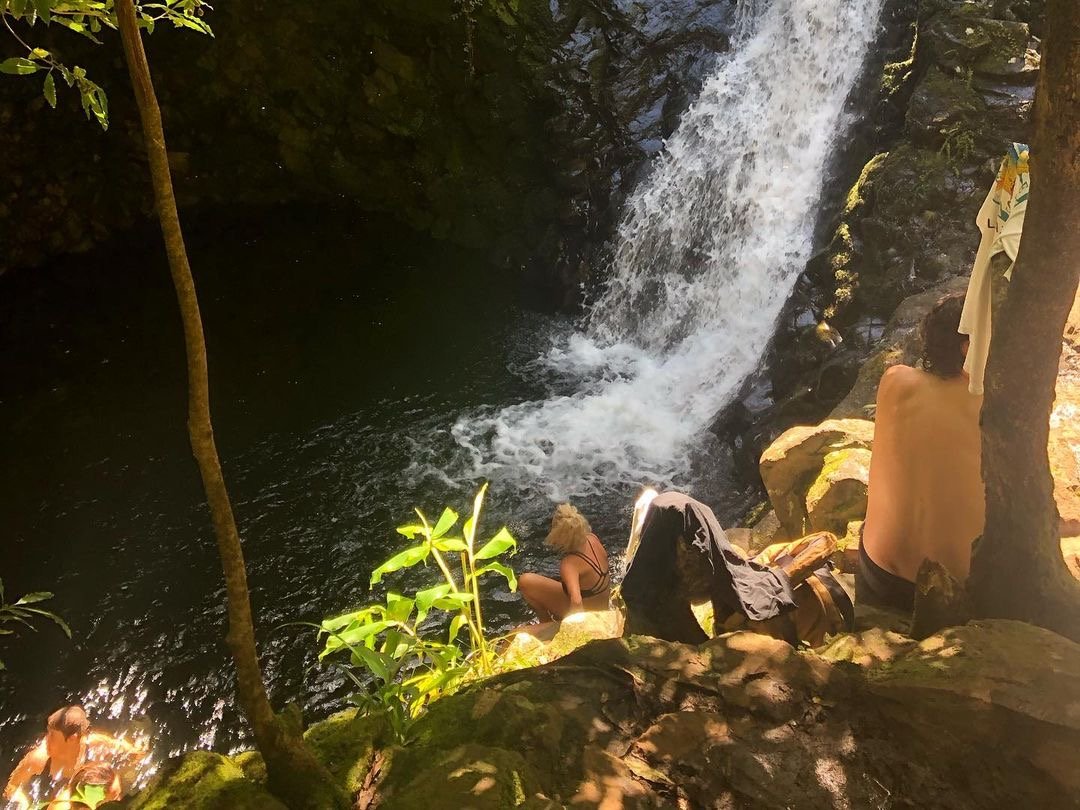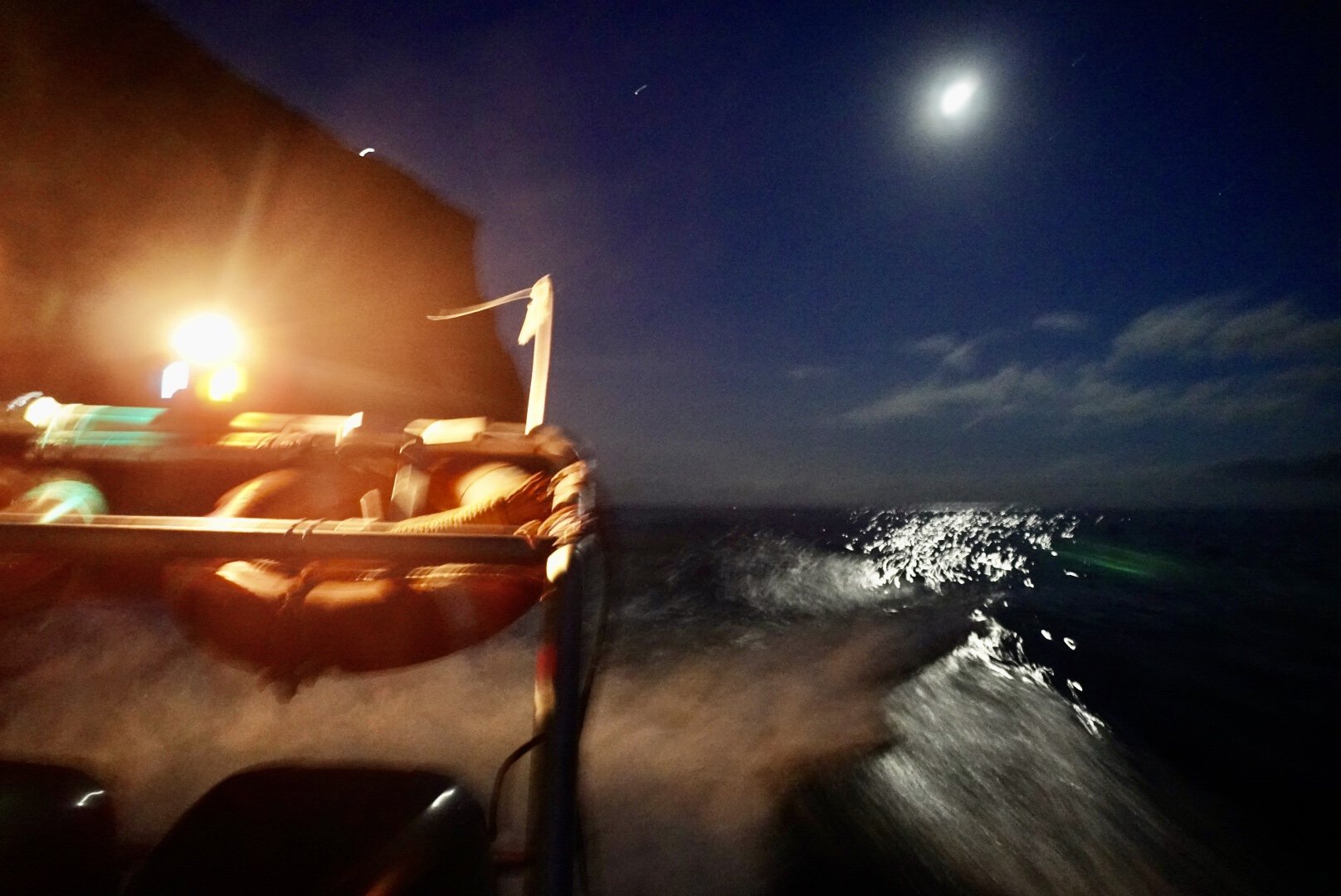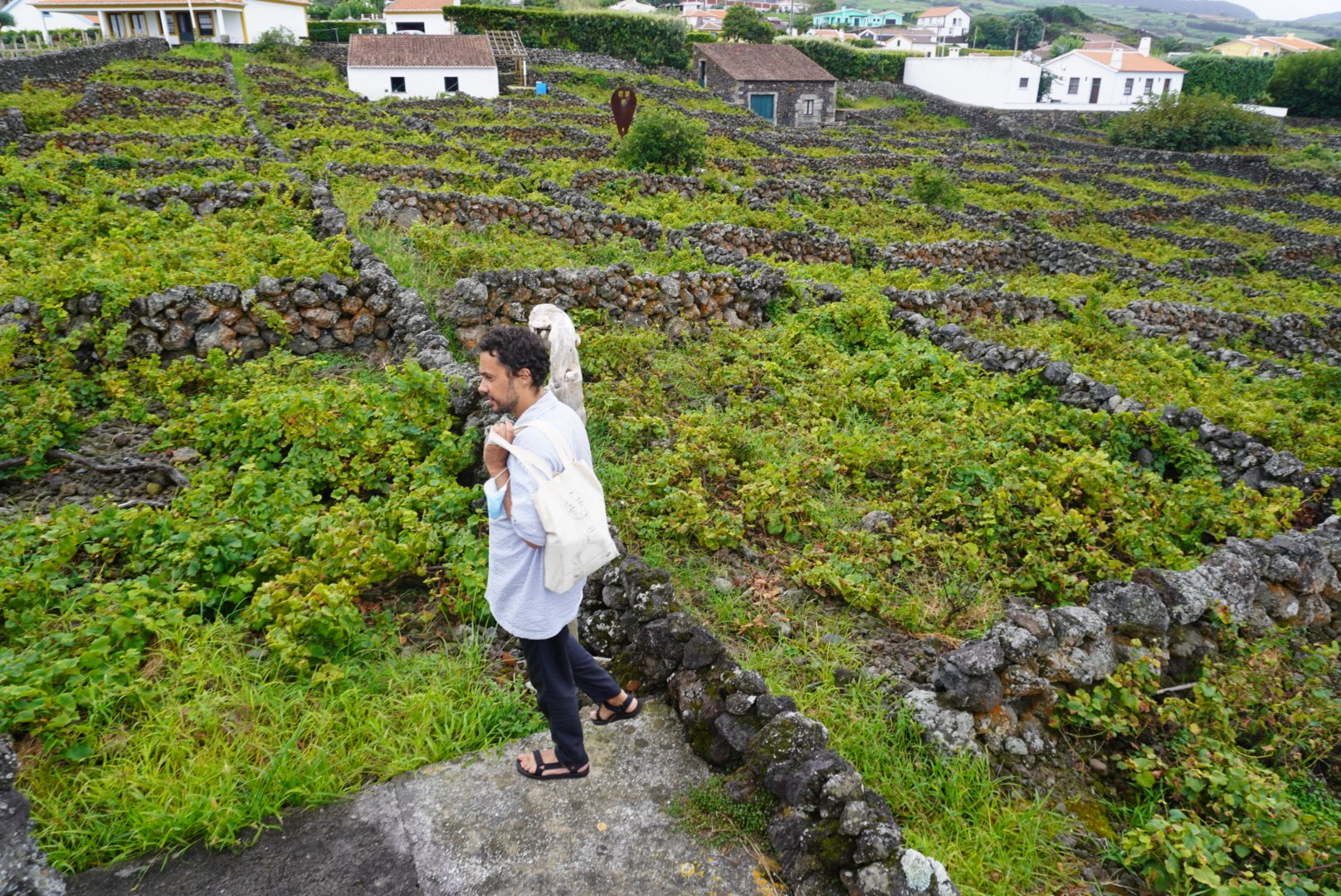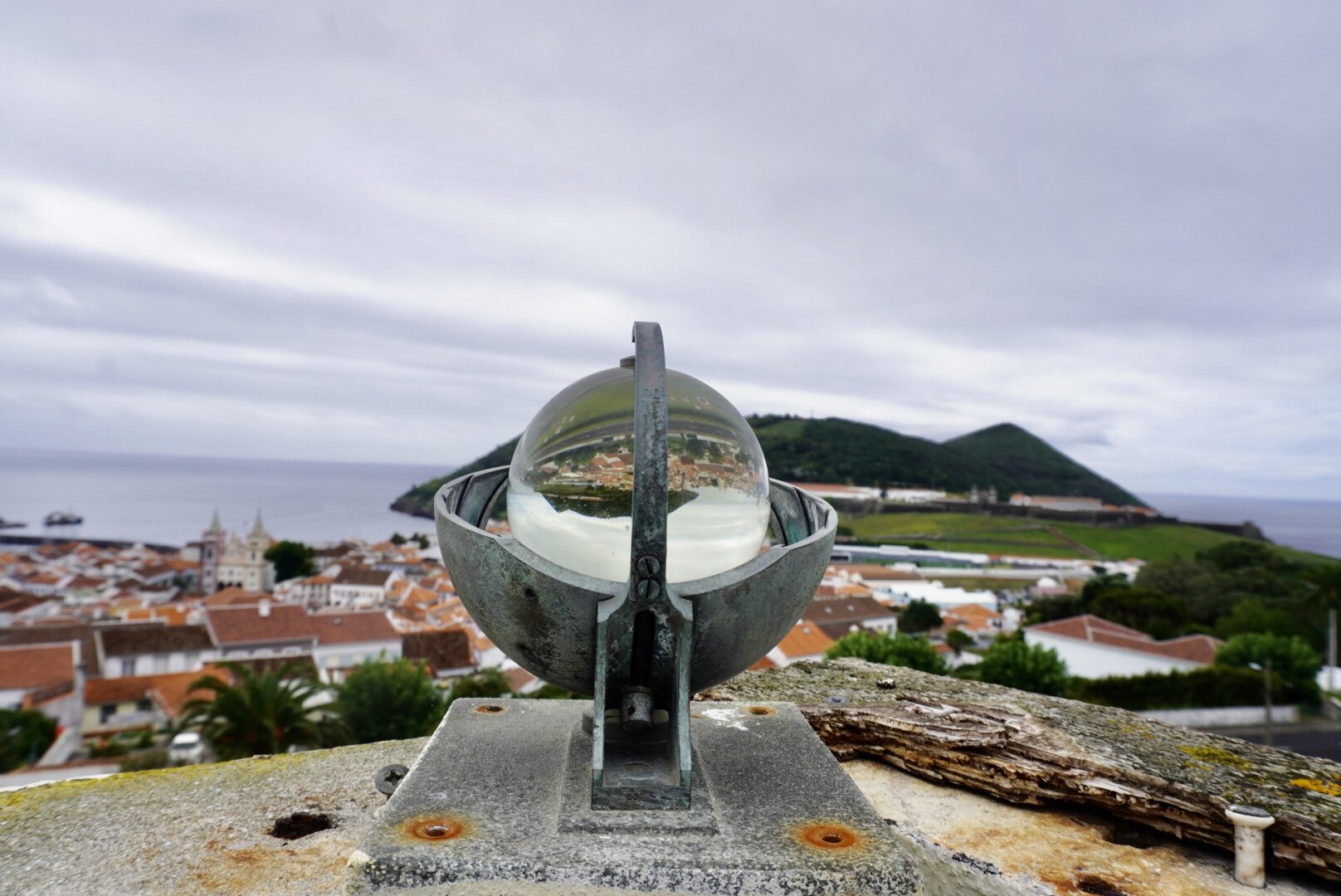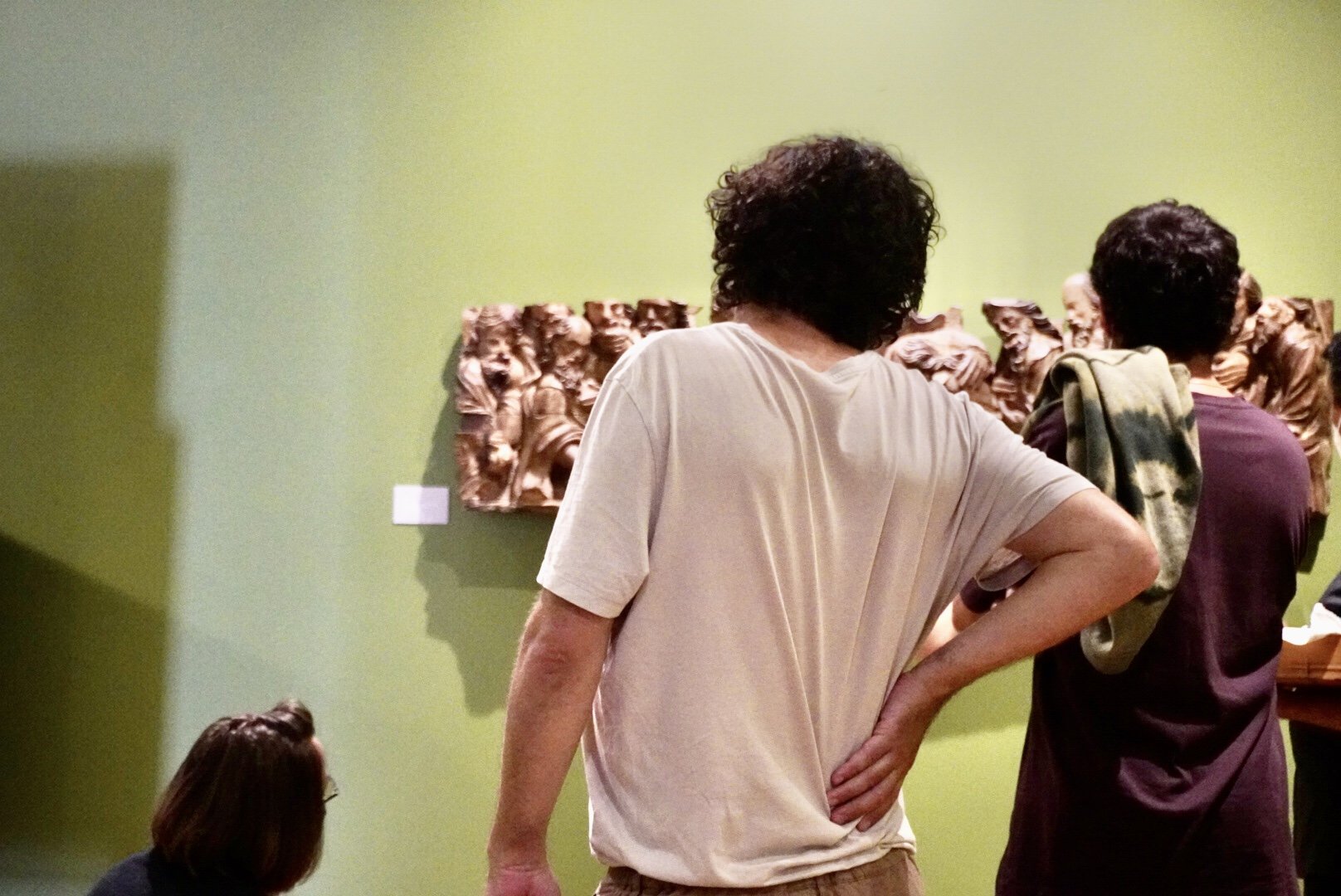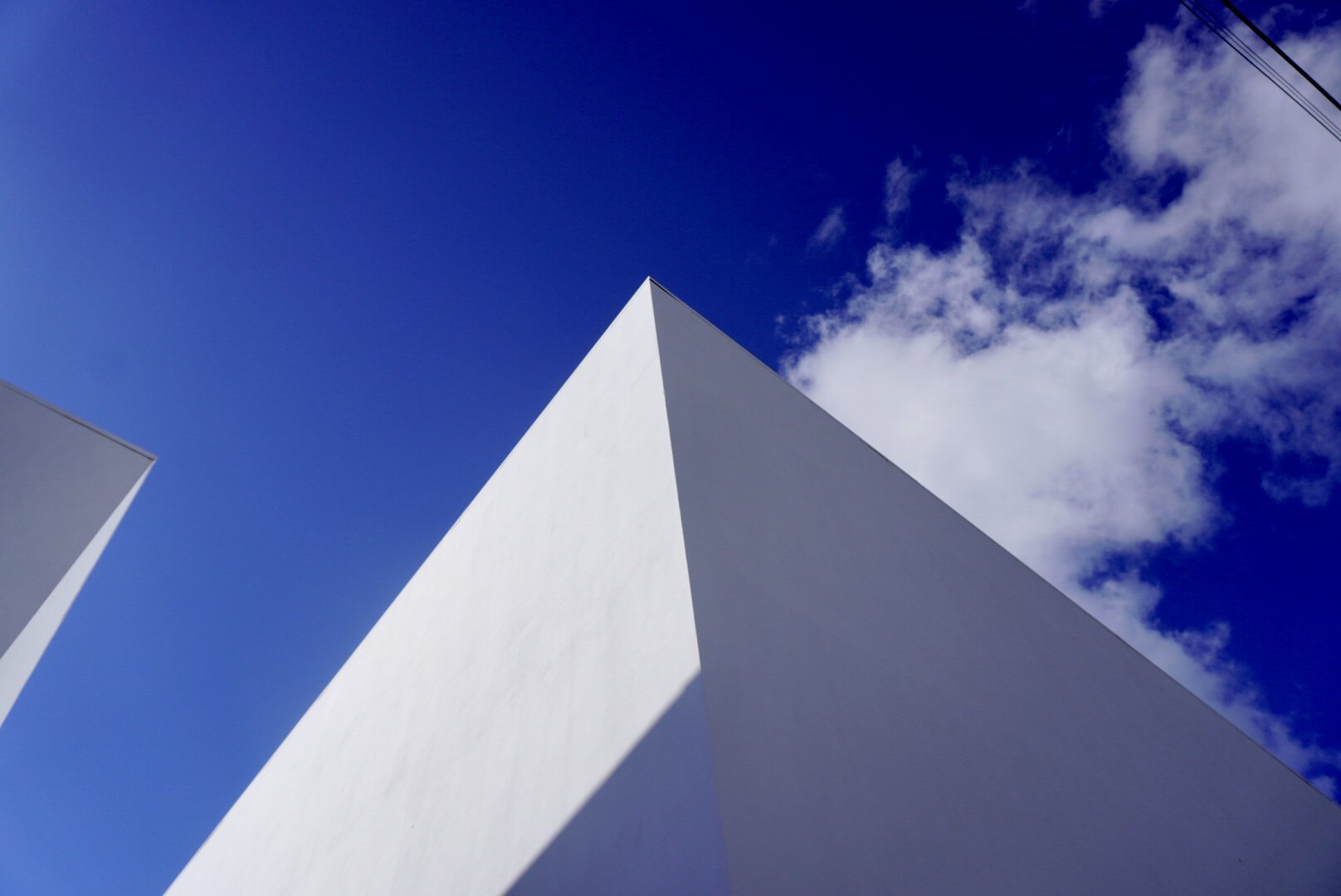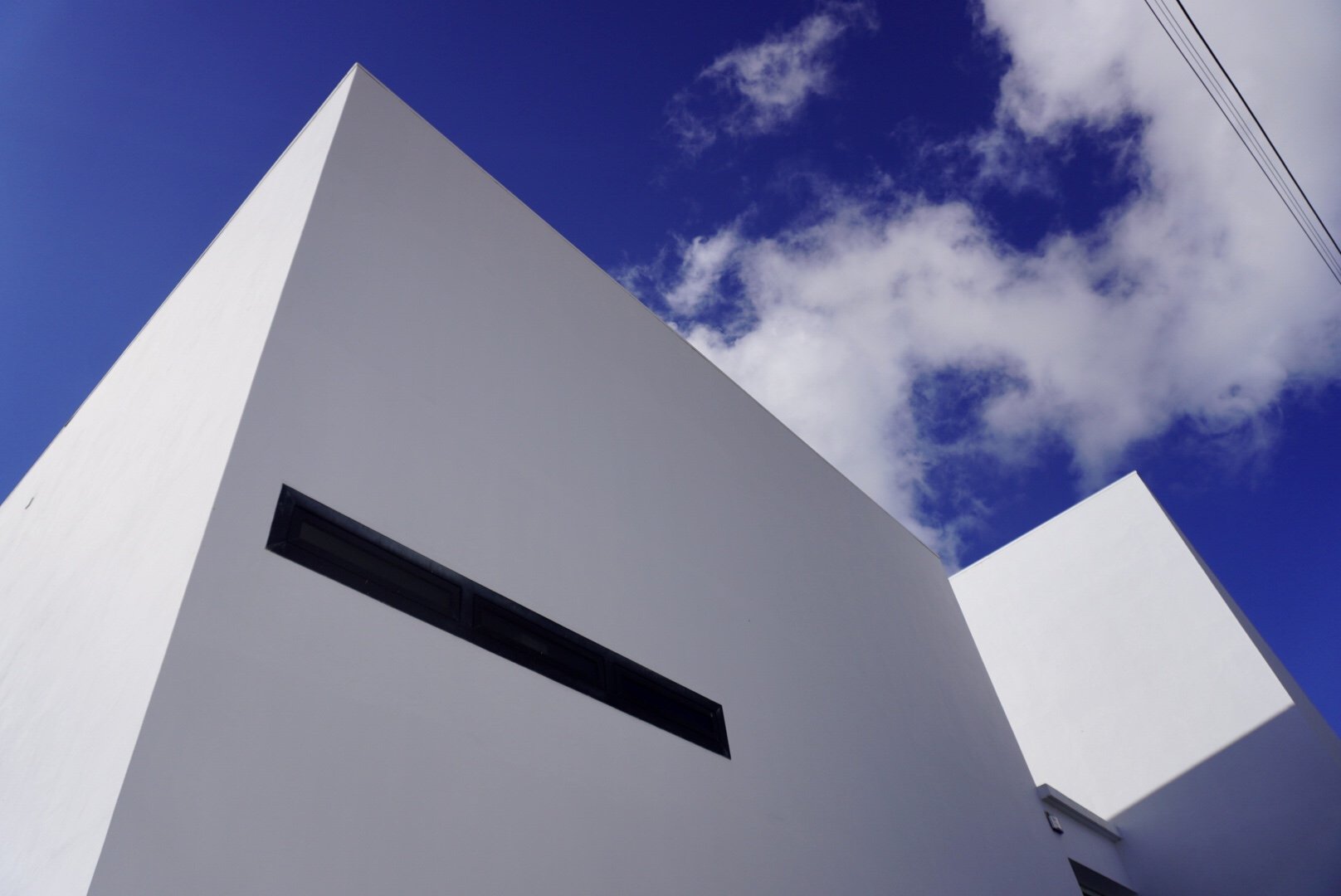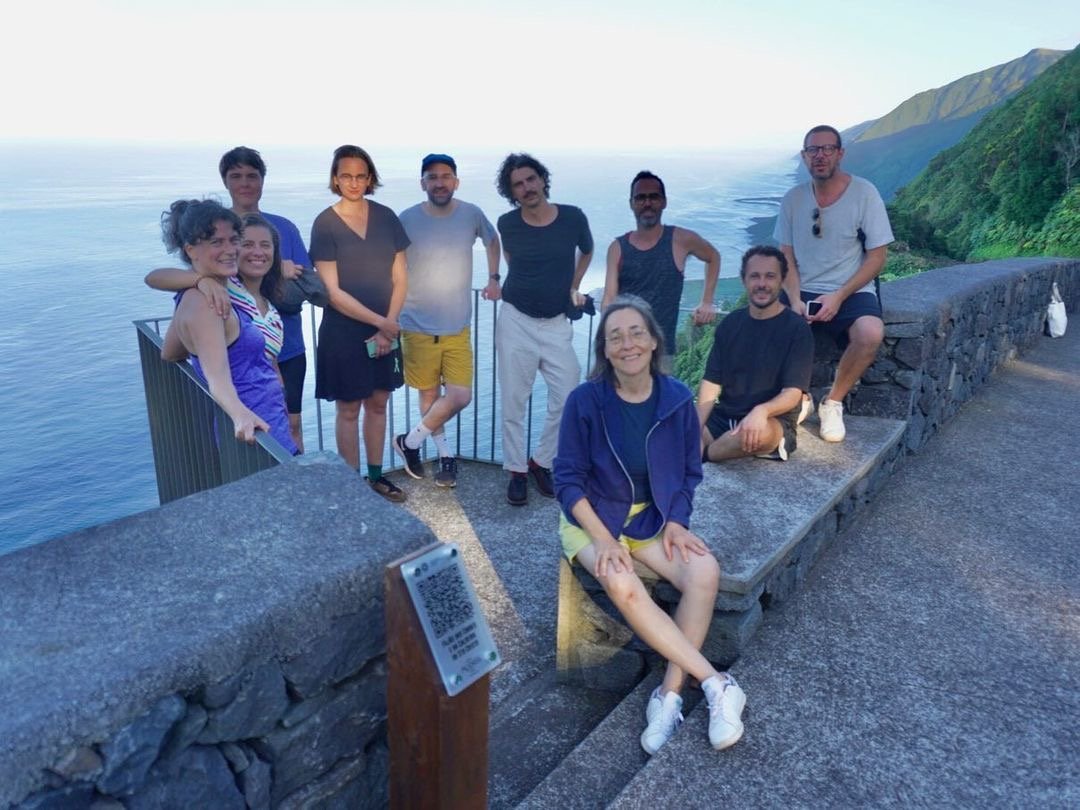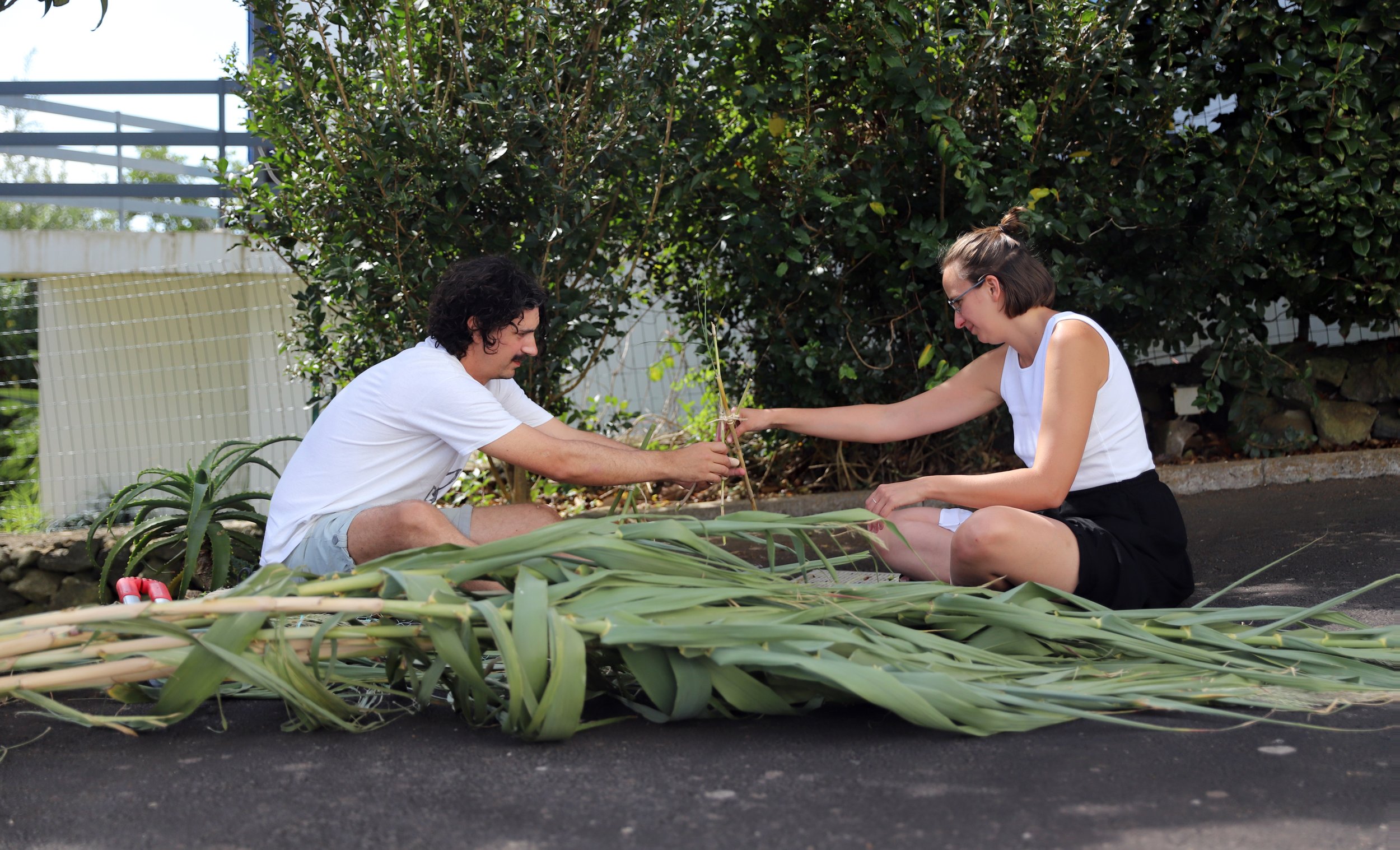I have been in love
for 8 million year
ADRIEN MISSIKA, INGELA IHRMAN, RICHARD HEALY, PEDRO BARATEIRO
Curated By Borbála Soos
The sea complicates my ideas about how identities and relations are organised and where the Self begins and ends. Skin is often seen as an enfolding interface, but the self exceeds this porous boundary by constantly being in relation; transmitting; recording; absorbing. When lifeforms come together and thus simultaneously transcend their status as subjects, what happens with emotions like loneliness and belonging? Who is the one feeling touched or hurt? – Ingela Ihrman
At the centre of the world there is a fiction; a fictional piece of land a meter wide by a meter long. It has not been thrown up from the depths; not from the violence of lava bursting up and cooling, though there is violence in its history. It is called Null Island, and you cannot travel there. – Introduction to Fiction as Method eds. Jon K Shaw and Theo Reeves-Evison, Sternberg Press, 2017 – quoted by Richard Healy
Colonising sea and land, colonising the minds of others, their native languages, music. Hybridity and creolisation. The trade of ideas, the exchange of diseases and microbes. Normalising violence and ownership of the body. – Pedro Barateiro
ynching the rhythms of the commons, we include both humans and non-humans in the ecologies of change and honour their infinitesimal role in the transitional states of matter, from the ineffable to the macro level. We reclaim the navigational tools that we summon, the weather horizons and changing climates, and invest in our mutual transformation. Not on a basis of speciesism but in the consideration of what lives and will live. – Margarida Mendes, Bodies are Weathers – on Adrien Missika’s work.
The formation of the Azores archipelago is an expression of the ever-emergent world, a continuous becoming with various phases of rising and falling intensities. Sitting between three continental plates, rather than being defined by a single fault, an extensive series of fracture zones keep opening like a wound that never heals. The pushing and pulling of p(l)ains create conflicts and eruptions. Materials boil and vent through orifices of various sizes. Viscous volcanic lava flows and solidifies into deposits of deep time – they form the voluptuous bodies of the islands. The rims of collapsed volcanoes embrace a series of lakes, like the inner ocean of the body or the amniotic fluid in women's wombs. Matter continues to transform into fertile, verdant mountains, a lusciousness ripening for capitalist exploitation. The mechanisms that form the complex relations of the archipelago are geological as well as linked to the natural wealth and extraction of resources; the unique strategic location and histories of plant and human colonisation; infrastructure projects and struggles for self-sufficiency; the threat of extreme weather and global climate crises; love, leisure and social media algorithms recommending bucket-list type tourist destinations...
The artists’ works in this international group exhibition address the idea of change and transformation. Various figures or alter-egos go through the world, trying to orient themselves and reflect on their relationship with their surroundings. Encountering the world happens via processes such as the intimate and sometimes profoundly sexual experience of desire and tactility; understanding how a certain gaze and the creation of otherness as a category can create violently unequal relationships; or experiencing the fact that, in a highly capitalistic world, Google is often able to predict more precisely what we desire than we ourselves can. These unconventional characters embody a desire for radical openness and propose ways to deconstruct oppressive binary paradigms and regimes of control. Slowly the distinction between the self and the environment dissolves as the outlines are traversed by substantial material interchanges.
As Stacy Alaimo’s concept of transcorporeality explains, all organic beings are inseparably linked to their environments. Transcorporeality challenges dualities and instead assumes intra-actions, entanglements and transits between human and other-than-human bodies and matter. The transcorporeal subject is generated through and intertwined with biological, technological, economic, social, political and other systems – processes of vastly different scales. Similarly, the works in the exhibition highlight the fact that all beings are intermeshed with a dynamic material flow that passes through them, transforms them and is transformed by them.
Borbála Soos
CURATOR
BORBÁLA SOOS
Borbála Soós (b 1984, Budapest, Hungary) is a UK-based curator and an active advocate, participant and organiser of artistic and ecological research. Borbála’s practice responds to, disrupts and enriches environmental thinking and related social and political urgencies. Her recent projects focus on the development of structures found in nature and explore these as metaphors for social organisation. She regularly curates projects related to the ideas of rewilding, climate justice, decolonial issues and the environmental and urban commons. She holds an MA in Curating Contemporary Art, Royal College of Art, London, UK (2012), and MA in Art History & Film Studies from Eötvös Loránd University, Budapest, HU (2009). Between 2012 and 2019 she was director/curator of Tenderpixel, a contemporary art gallery in central London. As a freelance curator she recently organised projects in collaboration with the OFF-Biennale, Budapest, HU; Trafó House of Contemporary Arts, Budapest, HU; Karlin Studios / Centre for Contemporary Art FUTURA, Prague, CZ; tranzit, Bratislava, SK; ICA, London, UK; Camden Arts Centre, London, UK; Rupert, Vilnius, LT; and Nogueras Blanchard, Madrid, ES among others. She has been visiting lecturer at Goldsmiths College, the Royal College of Art, Central Saint Martins and Edinburgh College of Art and in 2020 led a Peer Forum in collaboration with Artquest at the Horniman Museum and Gardens in London, UK. She is currently a Research Associate at CCA Derry~Londonderry and she is working towards a series of events in collaboration with the botanical gardens in Bratislava and Kunsthalle Bratislava, Slovakia.
ARTISTS
ADRIEN MISSIKA
Adrien Missika (b 1981, Paris, France) lives and works in Berlin. His work entices the observer to take on a view- point that contains elements belonging to times and geographies near and far at once. Driven by his personal interest for the exotic, he often conducts research on site, giving him opportunities to assimilate, demolish and reconstruct anew the clichés through which each of us builds a certain image of things far from us. While his works appear immediately interpretable, they are also built on layers of multiple historical, anthropological, alchemical and scientific references, as well as cultural and experiential ones. He graduated from ECAL (École cantonale d’art de Lausanne) in 2007. He has shown his work regularly in solo and group exhibition, amongst which: Vienna Biennale for Change/MAK, Vienna, AT; Kunsthall Wien, Vienna, AT; 1st Strasbourg Biennale, Strasbourg, FR; Proyectos Monclova, Mexico City, MX; Fondazione la Raia, Gavi, IT; Galeria Francisco Fino, Lisbon, PT; Æther, Sofia, BG; Bozar, Bruxelles, BE; 21er Haus, Belvedere in Vienna, AT; Kunsthaus Glarus, CH; Centre Culturel Suisse, Paris; Centre d’art contemporain Genève, CH; Palais de Tokyo in Paris; Centre Pompidou, Paris; Moscow Biennial of Young Art, RU; Metro Pictures, New York; Aargauer Kunsthaus, Aarau, CH; Nouveau Musée National de Monaco, Montecarlo, MC; Le Magasin, Grenoble, FR; Fotomuseum Winterthur, Zurich, CH; KARST, Plymouth, UK and Centre Pompidou Metz, FR. In 2009 he was awarded the Swiss Art Award, in 2011 the Prize of the Fondation Ricard and the Kiefer Hablitzel Prize. He is the founder of the art space Belo Campo in Lisbon, PT, 2017 and co-founder of the art space 1m3 in Lausanne, CH in 2006.
INGELA IHRMAN
Ingela Ihrman (b 1985, Kalmar, Sweden) lives and works in Malmö. She has a constant gaze towards the lifeforms and landscapes we refer to as Nature. Her work is sparked by the strong emotions of everyday life and a desire to understand, question or express certain aspects of being alive, social and human. It is particularly the pleasures and pain that come with co-existence, autonomy, loneliness and longing for belonging that intrigues her. Her practice includes sculpture, installation, performance, video and writing as well as collaborations within the fields of science, theatre and dance. She graduated from Konstfack, Stockholm 2012. She participated in the Yokohama Triennale (2020); Nordic Pavilion, 58th Venice Biennale (2019); 11th Gwangju Biennale, The Eighth Climate (2016); The Swamp Biennial, Art Lab Gnesta (2016) among others. A selection of recent exhibitions are La Casa Encendida, Madrid, ES (2021); The Giant Hogweed, Karlin Studios / Centre for Contemporary Art FUTURA, Prague, CZ (2021); Weather Report: Forecasting Future, Kiasma, Helsinki, FI (2020); Föreställningar om naturen, Västerås konstmuseum, Västerås, SE (2020); Sensing Nature From Within, Moderna Museet, Malmö, SE (2020); Air, Flowers, Salt. Castello di Rivoli, Torino, IT (2019); We Thrive, Cooper Gallery, University of Dundee, SC (2018); The Inner Ocean, der TANK, Institut Kunst, FHNW Academy of Art and Design, Basel, CH (2017), and Future Flourish, Tensta Konsthall, SE (2016). Upcoming projects, among others, include a group exhibition at Wellcome collection, London UK and a solo exhibition at Bohusläns Museum, Uddevalla SE.
PEDRO BARATEIRO
Pedro Barateiro (b 1979, Almada, Portugal) lives and works in Lisbon. Barateiro’s background in drawing, sculpture, video and writing was expanded by his education with an MA at the Malmö Art Academy, Lund University (Sweden) and at the Independent Study Program in Visual Arts at Maumaus – School of Visual Arts (Lisbon). He further developed his practice in residencies at Air Antwerpen (Antwerp), Pavillon – Palais de Tokyo (Paris), ISCP (New York), Sítio das Artes, CAM – Fundação Calouste Gulbenkian (Lisbon), Spike Island (Bristol) and Galeria Zé dos Bois (Lisbon). His work has been included in exhibitions such as the Sharjah Biennial 13, 29th; Bienal de São Paulo; 16th Sydney Biennale; 5th Berlin Biennale; Palais de Tokyo, Paris, FR; Fondazione Guiliani, Rome IT; Firstsite, Colchester, UK; ngbk, Berlin, DE; M HKA, Antwerp, BE; SESC Pompeia and Videobrasil, São Paulo, BR; Crac Alsace, Altkirch, FR; Museu de Arte Contemporânea de Serralves, Porto, PT; Fundação Calouste Gulbenkian,Lisbon, PT; ar/ge Kunst, Bolzano, IT; Le Plateaux – Frac Île-de-France, Paris, FR; Centro Galego de Arte Contemporânea, Santiago de Compostela, ES. Solo exhibitions include Netwerk, Aalst, BE; Basement Roma, IT; Néon, Lyon, FR; REDCAT, Los Angeles, US; Museu Colecção Berardo, Lisbon, PT; Kettle’s Yard, Cambridge, UK; Parkour, Lisbon, PT; Kunsthalle Lissabon, Lisbon, PT; Kunsthalle Basel, CH; Lumiar Cité, Lisbon, PT; Museu de Arte Contemporânea de Serralves, Porto, PT; MARCO - Museo de Arte Contemporánea de Vigo, ES; Pavilhão Branco - Museu da Cidade, Lisbon, PT; Spike Island, Bristol, UK. His performances were presented at TNDMII, Lisbon, PT; Centre Pompidou, Paris, FR; Teatro Rivoli, Porto, PT; ZHdK, Zurich, CH; 98Weeks, Beirut, LB; Théâtre de la Ville, Paris, FR, L’école nationale supérieure des beaux-arts —ENSBA, Paris, FR; Fondation Ricard, Paris, FR; M HKA/ Cinema Zuid, Antwerp, BE; Centro Cultural São Paulo, São Paulo, BR; Galeria Vermelho, São Paulo, BR; Teatro São Luiz, Lisbon, PT and Teatro Praga, Lisbon PT among other places.
Richard Healy
Richard Healy (b 1980, London UK) lives and works in London. His work encompasses
a number of media including video, sculpture, installation and print; central is the role of function. Embodied through simulations of design, his practice frequently engages with digital technology as a means for artistic production and with it the acts of labour that are obscured beneath the finish. He completed his MA in Fine Art at the Royal College of Art, London in 2008. Residencies and Awards include Fire Station Live/Work Programme, Acme Studios (2015 – 2020); Defining Pi, Wysing Arts Centre, Cambridge UK (July – Sept, 2013); i- land artist in residence, London / Worcester UK (Jun – Aug, 2009); Stanley Picker Fellowship, Kingston University (1 year residency program, 2008); Red Mansion Art Prize (Beijing Residency) Beijing CN (Sept – Oct, 2008). Solo exhibitions include The Great Indoors, Marian Cramer Projects, Amsterdan, NL (2017); Lubricants & Literature, Tenderpixel, London, UK (2016); Zodiac Beach, LRRH, Berlin, DE (2016); Victor Hugo Lost in Cherry Grove, with Tenderpixel at Art International, Istanbul, TR (2015); Outside the Red House, Marian Cramer Projects, Amsterdam, NL (2015); The Pines, White Cubicle, London, UK (2014); Prone Positions, Rowing, London, UK (2013); Vetiver, Marian Cramer Projects, Amsterdam, NL; But Mr Architect!, Furnished Space, London, UK (both 2012) and Strategies for Building, Outpost, Norwich, UK (2011). Selected group exhibitions and screenings include The London Open, Whitechapel Gallery, London UK; I like to fondle, Acme Fire Station, London UK; Cruising Spaces, LUX, London, UK; Now We Are Six, Marian Cramer Projects, Amsterdam, NL (2016); The Ultimate Vessel, Koppe Astner, Glasgow, SC; Discursive Objects, WAH Gallery, Eindhoven, NL; Blurred Edges: Non/Fiction, Seattle Art Museum, Seattle US, as part of the Black Box Festival; The Best Tailor in Town, Hunt Kastner, Prague, CZ; On the Devolution of Culture, Rob Tufnell, London, UK; Last Seen Entering the Biltmore (curated by Anna Gritz), South London Gallery, London, UK; I love you Me either, Project Native Informant London, UK; SECCESSONE (curated by Rhys Coren, Paul Flannery & Attilia Fattori Franchini), bubblebyte.org; Blue Lagoon (curated by Candice Jacobs), One Thornesby Street, Nottingham, UK; One and One and One, CGP London, UK ; Forth & Back, Limoncello, London, UK; Florence Loewy, Paris, FR; 10,000 Hours, Glasgow International, Glasgow, SC; YBAII (curated by Ryan Gander and Christina von Rotenhan), Dienstgebaude, Zurich CH.
